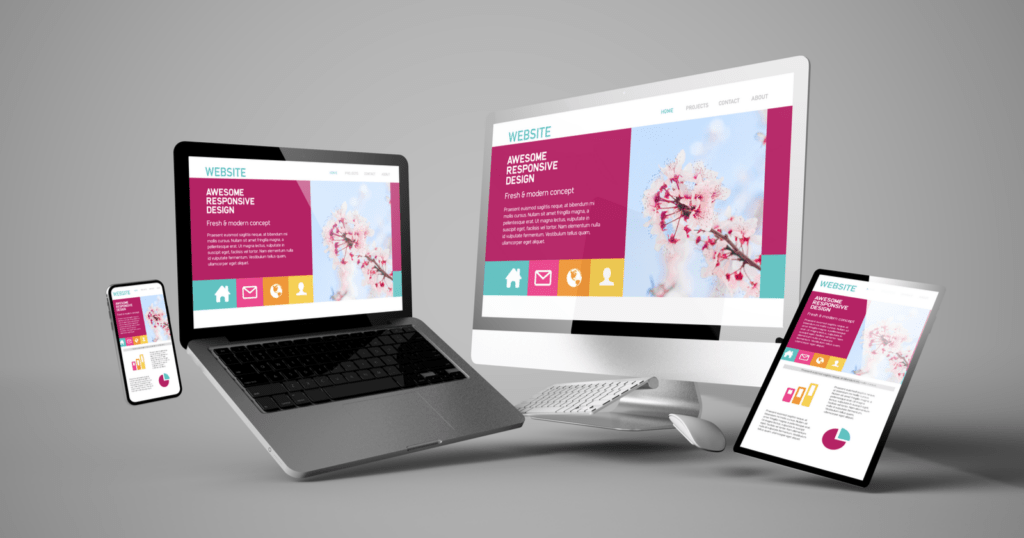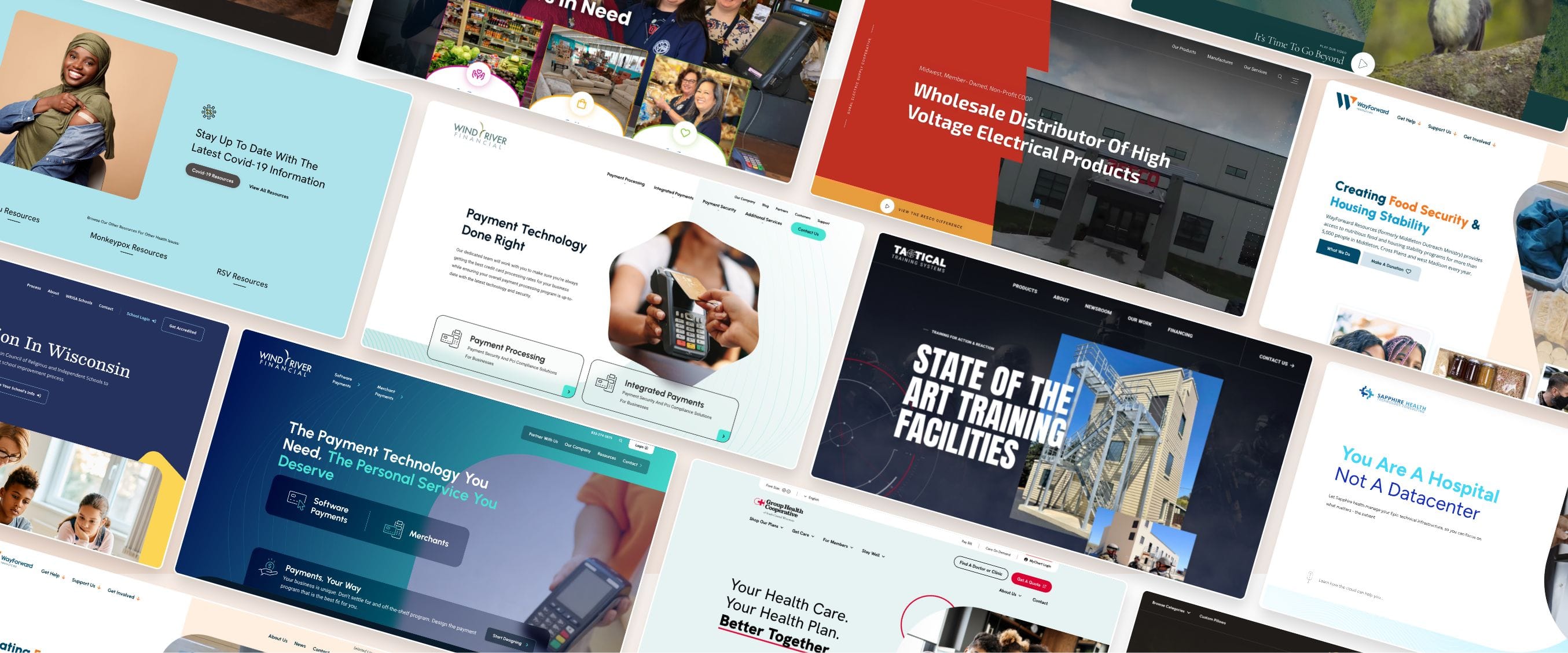Advanced Website Design with Focus on User Engagement
Advanced Website Design with Focus on User Engagement
Blog Article
Leading Tips for Producing an Impactful Site Style That Transforms
In today's electronic landscape, the significance of an impactful internet site layout can not be overstated, particularly when it pertains to transforming visitors into clients. To attain this, one have to consider a range of elements, including comprehending the target market, focusing on user experience, and optimizing for mobile systems. The critical use of engaging call-to-actions and a distinct visual power structure plays a crucial duty in guiding individuals through their journey. As we explore these important components, it comes to be noticeable that the success of your site pivots on even more than simply aesthetic appeal; it calls for a thoughtful method to layout and capability.

Understand Your Target Market
Comprehending your target audience is essential to effective website style, as it prepares for developing an engaging customer experience. Recognizing that your individuals are, including their demographics, choices, and behaviors, allows developers to customize the site's material, layout, and capability to satisfy particular needs.
Conducting detailed market research is vital in this procedure. Surveys, meetings, and analytics can provide valuable understandings right into customer assumptions and discomfort factors. By assembling this information, developers can produce user identities that stand for different segments of the audience, making certain that design decisions are informed and pertinent.
Furthermore, comprehending the target market helps in choosing appropriate design components such as shade systems, typography, and imagery that resonate with individuals. A website that talks straight to its target market promotes a sense of link and count on, motivating longer gos to and greater conversion rates.
Eventually, a user-centered technique to site style not just boosts user satisfaction but likewise supports service objectives by driving interaction and commitment. By focusing on the needs and preferences of the target market, a site can efficiently serve its purpose and accomplish wanted results.
Prioritize User Experience
To improve the overall efficiency of a site, prioritizing customer experience (UX) is necessary (Website Design). A properly designed UX guarantees that site visitors can navigate the site easily, discover information promptly, and involve with material meaningfully. This results in boosted customer complete satisfaction and greater conversion prices
Begin by applying user-friendly navigation. Menus must be logically structured, enabling users to situate essential locations of the site with minimal effort. Uniformity in design elements, such as color schemes and font styles, cultivates experience, which is important for keeping individual involvement.
In addition, consider the filling rate of your site. A hold-up of just a few secs can cause considerable drop-offs, as users are much less likely to await a slow-loading web page. Simplifying images and maximizing code can boost performance and retain visitors.
By focusing on customer experience, you not only develop a much more enjoyable setting for visitors but likewise strengthen your brand's credibility. Inevitably, a focus on UX is a financial investment in the long-term success of your web site.
Optimize for Mobile Gadgets
Enhancing for smart phones is important in today's digital landscape, where an enhancing number of users gain access to websites with mobile phones and tablets. A mobile-friendly style not just improves user experience however likewise plays a considerable duty in improving internet search engine positions. To achieve this, it is necessary to embrace a responsive layout that immediately changes to various screen sizes and alignments.

Loading speed is an additional vital aspect; mobile individuals are usually less client and anticipate fast accessibility to details. By prioritizing mobile optimization, you make certain that your internet site remains competitive and successfully involves a broader audience.
Usage Engaging Call-to-Actions
A web site's performance commonly hinges on its ability to assist visitors towards wanted activities, making engaging call-to-actions (CTAs) crucial elements of design. CTAs function as the pivotal points that route customers to engage with the website, whether that suggests purchasing, enrolling in a newsletter, or downloading a resource.
To create reliable CTAs, clearness is extremely important. Usage concise language that plainly interacts the activity you want the individual to take.
In addition, the design of CTAs need to stand out without being obtrusive. Employ contrasting colors and clear font styles to ensure they catch interest. Additionally, think about using directional cues, such as arrows or photos, to guide customers towards these switches. By concentrating on these elements, organizations can substantially enhance customer involvement, driving conversions and inevitably attaining their web site's goals.
Concentrate On Visual Power Structure
Reliable internet site design relies heavily on a well-structured visual hierarchy that guides individuals via material seamlessly. By arranging components in a manner that focuses on details, developers can improve customer experience and assist in decision-making. This includes utilizing dimension, color, contrast, and spacing strategically to accentuate the most important components of a web page.
Using larger fonts for headings and subheadings establishes a clear difference between different areas, permitting users to check material effortlessly. Furthermore, employing contrasting shades for switches and calls-to-action can capture user interest and motivate interaction. Whitespace is another important part; it avoids mess and makes it possible More Help for customers to concentrate on crucial messages without interruptions.
Photos and graphics ought to complement the message while likewise sticking to the well established pecking order, reinforcing the general message (Website Design). Consistency in design elements, such as color plans and typography, further strengthens the visual hierarchy, making navigation user-friendly

Final Thought
In final thought, efficient internet site style necessitates a thorough understanding of the target audience, prioritization of customer experience, and mobile optimization. The tactical use compelling call-to-actions and a well-defined visual power structure better improves user involvement. By implementing these concepts, web sites can accomplish greater conversion prices, ensuring that style components not just bring in visitors yet likewise assist in seamless navigating and communication. Ultimately, a well-executed site style functions as an important element in driving customer actions and attaining organization objectives.
Report this page